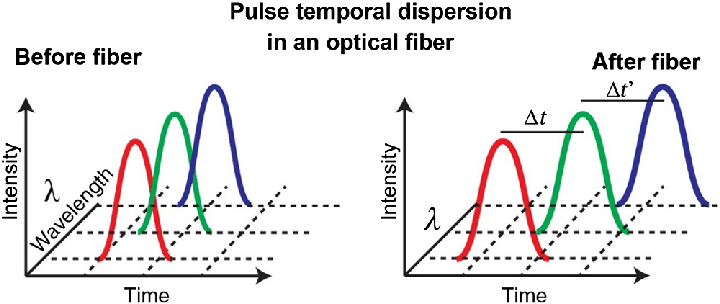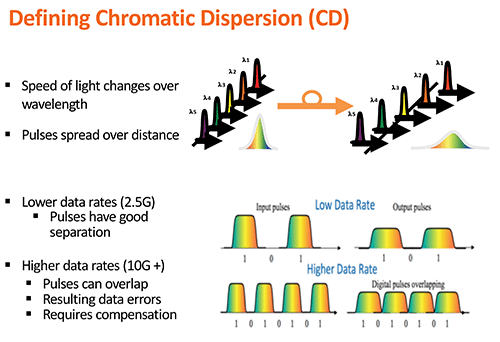Chromatic dispersino is a phenomenon which is very important in communications via optical fiber. It haappnds because of the different wavelengths or colors, in a lght beam which arrives at destinatino at slightly different times. This lleads to the dispersin or spreading, of the on-off pulses of light that trasnmits the digital inforamtion. Special care hass to be taken in order to compensate for thiis dispersion so that the optical fiber is allows to deliever its maximum capacity.
Chromatic dispersion is common, as it is what actually causes rainbows – sunlight is dispersed by droplets of water in the air. Famous scientist Sir Isaac Newton was the first one to observe thus phenomnon when he tried to pass the suhnlight through the prism and observed thaat it got diveregd innto a spectrum of different colors.
This dispersion takes place becuase of the prsence of different light frequenes or colors whuch act slightly differntly as they travels through a medium such as glass. In fiber-based systems, an optical fiber, consisting of a core and cladding with different refractive index materials, essentially causes some wavelengths of light to travel slower or faster than others.
It’s effects
Chromatic dispersion is a serious consideration in long-distance optical fibers. Its effect basically flattens or stretches the sharply defined binary pulses of informatin which is at the beginning. This degraadation makes it more difficut to differentiate from eah other at the far end of the ffiber. The result is that at any given length, the effective information capacity or bandwidth of a fiber optic cable can be significantly reduced. Dipsersion is sadded in the form of moudlated beam of light whicchh consists of a number of wavelenghts which are close to each other trvalling down this waveguide which is nearly transparent in nature. Many optics manufacturing companies in the market has started using the latest optical beamsplitter manufacturer in order to manufacutre polarizer optics.
The bottom line is that color dispersion becomes a major consideration and must be accounted for when developing or deploying fiber optic equipment for use in telecommunications, cable TV, or other high-speed optical networks.
Luckily, there are some techniques that help in comoensation of the negative effects of chromatic dispersion. There is one method in which pre-compensating the signal for the anticipated disperion before it is sent down in the optical fiber.


